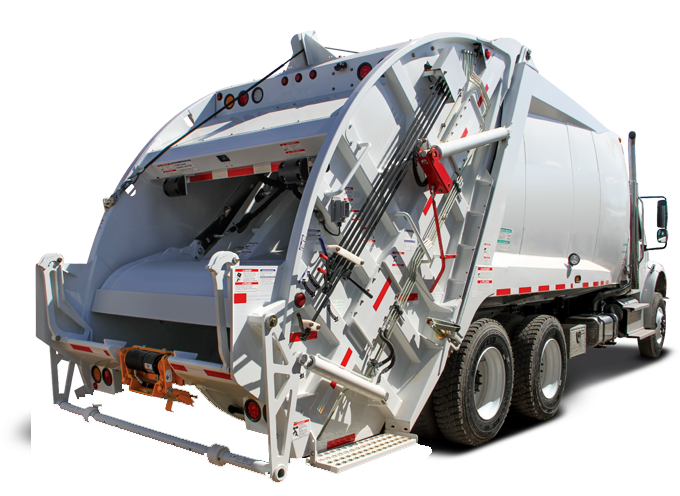In this modern world, hydraulic systems are used in many types of industries from massive plants to your local garbage truck. The garbage truck relies on the hydraulic system to compact the trash and the better the compacting, the more customers one truck can handle. However, the most common problem of modern waste handling vehicles is the temperature extremes that occur in the hydraulic system.
Maintaining Hydraulic Oil Temperature
Most people immediately think of high heat when considering the effects that temperature has on the hydraulics but the cold can have a negative impact on the hydraulic system, too. During the winter, low-temperatures can cause problems for hydraulics just like a hot summer day can.
Although it may not seem complicated, a hydraulic packer is what makes the garbage truck able to handle over 1000 customers on one route. It compacts the garbage so that the truck can service more people each day. There are substantial lengths of lines that carry the fluid throughout the truck. The long length of these hoses and lines can cause the system to be more vulnerable to pressure drop. As the pressure drops, the heat of the system and the oil begins to increase. To properly maintain an efficient hydraulic system, the reduction or elimination of the pressure dropping is key.
The Optimal Hydraulic Oil Temperature Operating Range
The extreme temperature changes require the correct viscosity of the oil for keeping problems at bay. The optimal hydraulic oil temperature operating range should be between 120 and 140 degrees. Anything over 176 degrees can reduce the life of the oil and hydraulic system. You need a fluid that is thin enough so it can flow easily but it needs to be thick enough so that it can seal and lubricate the bearings and surfaces in order to reduce heat and friction.
For the most part, high-viscosity oil provides the best performance. A viscosity of 100 SUS or 20 cSt works best for normal conditions. When it’s cold out, the fluid should not exceed 7,500 SUS or 1620 cSt at startup. Warming up the system gradually and waiting until the oil reaches a fluid state before operating at full pressure is recommended.
More Tips For Maintaining The Hydraulic System
It’s important not to contaminate the fluid when filling the reservoir. Always use a 100 mesh screen when adding fluid to your system. The reservoir needs a breather but be sure that the breather and filler cap are properly sealed so that moisture doesn’t enter. Moisture could result in damage to the hydraulic components. Be sure that during routine truck inspections, you search for any type of hydraulic leak. You should check the oil level as well during this inspection. The system should be flushed, and the filter and oil changed regularly.
Every morning, the cylinder functions should be tested to make sure no fluid is leaking and that the cylinders are extending and retracting correctly. Be sure that the cylinders are not touching any other parts of the truck or system. The oil needs to be kept clean. If any type of metal particles enter the system, all the oil will need to be drained and the system will need flushed. All filters and screens will need either replaced or cleaned thoroughly. New oil will need to be used for the whole system. The hydraulic system needs to be maintained by the entire crew of employees, from top management on to the drivers.
By caring for the hydraulic system and maintaining the hydraulic fluid temperatures, you can double the life of the entire system, as well as the oil. Not only is this beneficial to a company’s bottom line, but it also benefits the environment.
Are You Looking For A Used Garbage Truck?
If you are in the market for a used garbage truck, you want a vehicle that will last for years. Our reconditioned garbage trucks are DOT certified and our trucks are priced to sell. Contact us today for a used garbage truck quote that comes equipped with our Route Ready Confidence warranty.

